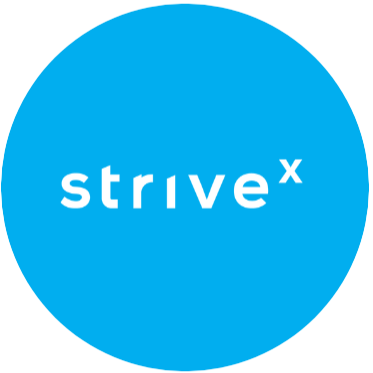Ecommerce is big business in America, accounting for almost 9% of all US retail sales in 2024 and expected to grow to $1.7 trillion and a 20% market share by 2029. Which is all well and good, but how can you get a piece of this amazing industry? What does it take to start an ecommerce business? Let’s find out.
What is an ecommerce business?
An ecommerce business sells products or services online through websites, apps, or digital marketplaces like eBay or Amazon. Harnessing the power of the internet allows ecommerce organizations to reach customers globally without the need of physical brick and mortar stores. Transactions, including payments and order processing, occur online, whilst delivery of physical goods is typically handled by third-party shipping companies who often deliver products to the buyer on the same or next business day.
Ecommerce businesses can sell physical goods, digital products, or services, but they typically require strong marketing, plus efficient inventory management and responsive customer service to succeed in the highly competitive online market.
What are the 4 types of ecommerce businesses?
If you’re going to launch an ecommerce business, you’ll need to determine your sales niche. To do this you’ll first need to decide what kind of ecommerce business you want to be. There are four ecommerce models to choose from:
- Business-to-Consumer (B2C)
You sell direct to the end-user, such as when a business sells you a pair of shoes.
- Business-to-Business (B2B)
You sell direct to other businesses – such as when a small business sells office supplies to a large corporation.
- Consumer-to-Business (C2B)
The least common ecommerce model, popular mostly among freelancers. This business model involves consumers exchanging their products and/or services directly with a business via the internet – such as when a graphic designer sells their services to design a logo for a business.
- Consumer-to-Consumer (C2C)
This model is also known as peer-to-peer (P2P) ecommerce and it involves the electronic exchange of goods, services, or information between consumers through a third-party platform like eBay or Facebook Marketplace.
Why start an ecommerce business in 2024?
Why would you start an ecommerce business instead of a more traditional venture? Let’s consider the pros and cons:
Pros:
- The global shift towards online shopping continues to grow. Consumers increasingly favor the convenience of buying from home.
- Ecommerce allows you to reach a global audience, operate 24/7, and avoid the overhead costs of physical stores.
- Typically has lower start-up costs that physical stores.
- Ecommerce offers scalability, as you can easily expand product lines or markets.
- Advanced digital tools make it easier to set up and manage online businesses.
Cons:
- The ecommerce space is highly competitive, making it crucial to invest in digital marketing and customer experience to stand out.
- Shipping logistics, returns management, and customer service can be complex and time-consuming.
- Increased risk of online fraud and cybersecurity threats.
- Success in ecommerce demands continuous adaptation to evolving technology, trends, and consumer preferences. Many ecommerce businesses start by chasing a trend or fad that can quickly peter out.
Are ecommerce businesses profitable?
They can be – although it’s important to factor in all expenditures to calculate profitability and not simply focus on the headline profit margin you make on the goods or services you sell.
As well as the cost of your wholesale goods or services, packing materials and shipping expenses, you must also factor in peripheral costs such as website maintenance and design, social media content production, payments to market influencers, and product testing. Other secondary expenses, such as warehousing, high levels of product return, and the need to employ large numbers of workers to handle your logistics, (as Amazon does) will also impact your bottom line.
Top tip: According to Forbes, you may generate better profits by selling products with a higher price tag – over $200 – than by selling low-cost, high volume goods.
How to start an e-commerce business from scratch in 5 steps
Starting an ecommerce business is the same as launching any type of venture – do your homework, concentrate on the fundamentals and keep your costs to the minimum.
Step 1: Research and validate your business idea
Businesses succeed by offering products or services that answer a need or solve a problem. This means your first step is to determine what need your business will meet or what problem it will solve. You can do this by answering the following questions:
- What are the common problems your potential customers face?
- How can your product or service provide a unique solution or offer added value?
- What gaps exist in the current market that your business can fill?
Don’t be tempted to run with the first idea you come up with. Thoroughly research your competition to identify unmet needs or opportunities for innovation. Can you do it better, faster, cheaper? Understanding your customers’ desires, preferences, and frustrations will help you shape your business strategy, refine your offerings, and create compelling marketing messages. Ultimately, by focusing on solving a real problem or fulfilling an unmet need, you build a stronger value proposition, which not only attracts customers but also fosters long-term loyalty and business growth.
Step 2: Source products or services
Now you know what problem or need you are going to solve or meet, you can manufacture or acquire the products – or enlist the talent of employees and/or contractors to provide the services – that you will sell.
If you’re selling products instead of a service, you could finetune your business model with different sales options:
- Reselling
Reselling existing products involves purchasing items from suppliers and selling them to customers at a profit. You can use online directories and listings to find suppliers, establish relationships, and secure a steady product stream. After ordering products from vendors, you store them and ship them to customers once they sell. Building strong supplier relationships can lead to better pricing and a reliable supply chain, benefiting your business in the long run.
- Create your products
For those who prefer greater control over quality and design, creating products is an option. While it can be more challenging to scale, making handmade or custom products allows sellers to charge a premium. Platforms like Amazon Handmade cater to this type of ecommerce.
- Dropshipping and print-on-demand
Dropshipping and print-on-demand are alternatives for sellers who don’t want to manage inventory. With dropshipping, your suppliers ship directly to your customers when orders are placed. Print-on-demand allows you to produce items like T-shirts or books after a customer orders, which is ideal for custom or niche products.
- Partner with a manufacturer
Partnering with a manufacturer can be a good choice if you want to develop your own brand. Manufacturers can produce items based on your specifications, but finding the right one can take time. Request samples from multiple manufacturers, and test their quality, speed, and communication. Having a backup supplier in a different region can help avoid stock shortages due to supply chain delays.
Step 3: Choose your model and select an online selling channel
Most ecommerce businesses sell to consumers (B2C) or sell to other businesses (B2B). In many cases, what you are selling will decide your selling model. For example, if you’re going to offer a better mousetrap, you’ll use the B2C model and sell direct to folks at home.
Once you have set your model, you’ll need to select your online selling channel. This means where will buyers see your goods or services and place their orders? You have several options:
- Website
Selling from your own website cuts out the middleman (marketplaces like eBay), which can make your business more profitable, but it will take longer to build an audience and you may need to spend heavily on advertising and social media to create brand awareness. In most cases, especially when your business is new, you may be better off promoting your website on your market stall within a major marketplace.
- Marketplace
Major platforms such as Amazon, eBay and Etsy can give you immediate visibility and access to a huge global audience. However, on the downside, you will pay platform fees and commissions and you will not have sole control of the selling process. In some cases, you could wait up to 4 weeks to receive money from your buyers.
- Social selling
Social selling is a way for entrepreneurs to share information about their products and allow customers to buy during a live, online show. Customers can see the products, ask questions, and get personalized product recommendations in real-time. Social selling can take place on social media or live-streaming destinations like Amazon Live, an interactive way to build customer relationships
Step 4: Set up an online store and list products
You know what you’re selling and where you’re selling it. Now you have to build your online store and list your products or services.
If you’re selling off your website, you can create a unique look, process and structure for your store – although you may need the services of a skilled website designer to give your site a professional sheen. (You’ll also need to subscribe to a payments processor like Square, Stripe or Shopify to handle customer orders).
If you’re selling via a marketplace such as Amazon, you’ll need to work within their guidelines and will have less freedom on the look and features of your store. However, all the backroom details, such as payments, customer updates and delivery progress will be handled for you.
If you’re not sure what prices to set, you can research competitors to see how they price similar items. Additionally, platforms like eBay may suggest prices based on recent sales of comparable items during the listing process. Getting your pricing right is key to attracting buyers and ensuring you get the best value for your items.
Step 5: Market and promote your business
There are many ways to showcase your products, attract potential customers, and turn them into buyers. Targeted marketing and promotional campaigns tailored to your sales channels can help you reach a wider audience and boost conversions.
Here are some key marketing tips:
- Use targeted cost-per-click (CPC) ads like Sponsored Products or Sponsored Brands (if you’re part of an enrolled brand) to promote specific products. To maximize effectiveness, use language that resonates with your audience and regularly adjust your promotional pricing to optimize performance.
- Offer special promotions, such as seasonal sales, lightning deals, or digital coupons. These incentives can create a sense of urgency and appeal to price-sensitive shoppers.
- Leverage social media marketing to reach engaged audiences. Create compelling content on platforms like Instagram, Facebook, or TikTok, and collaborate with influencers who can authentically promote your products to their followers. Paid social ads can also amplify your reach.
- Upsell or cross-sell products by suggesting higher-priced alternatives or complementary items. Personalized recommendations can increase the chances of larger purchases.
- Build a blog or email list to cultivate a loyal customer base. Regularly share valuable content, promotions, and product updates through newsletters, and use email automation to send targeted campaigns that drive repeat business.
How much does it cost to start an e-commerce business?
The type of goods or services you sell, where you sell and the size and sophistication of your ecommerce business will determine how much it costs to get up and running. If you’re starting small and selling via a platform like eBay, you may get started for as little as $500. However, if your goals are bigger and you want to hit the ground running with a professionally designed website, solid advertising and marketing, and your own sales and logistics team, you can expect to spend much more – typically in the range of $12,000 to $40,000.
Get started with Swoop's business funding platform
No matter if you’re starting from scratch or you’re expanding an established ecommerce business, chances are you’ll need finance to make your operation grow. Funding is where Swoop can really help. Contact us to discuss your borrowing needs, get help with loan applications and to compare high-quality business loans from a choice of lenders. Make your ecommerce business really click. Register with Swoop today.













 yet? Register here!
yet? Register here!